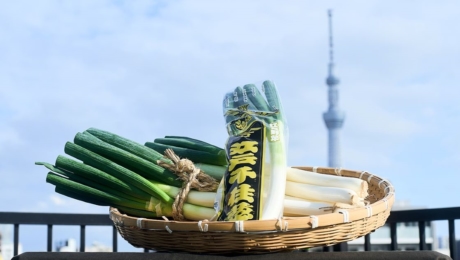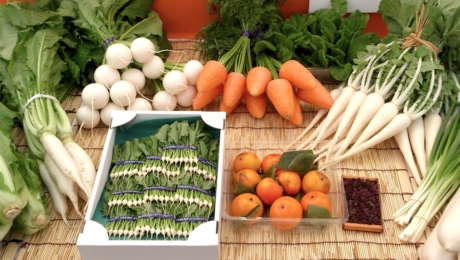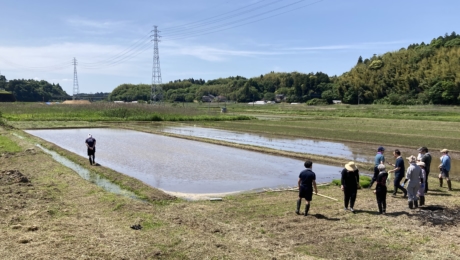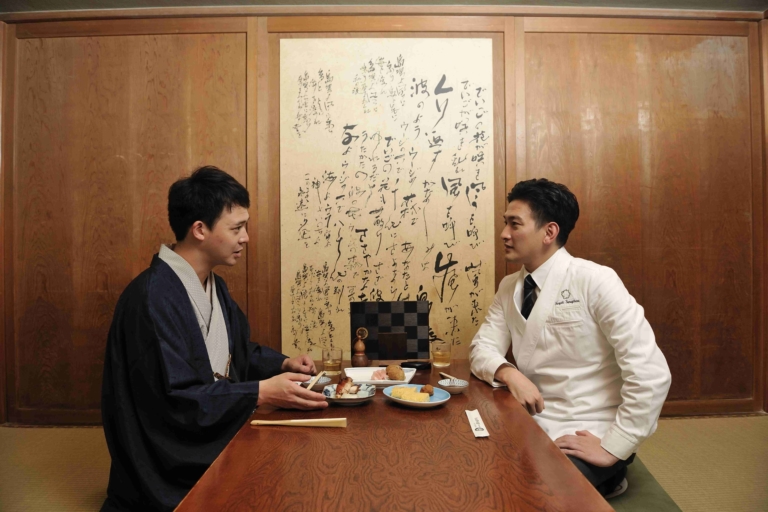
The shared cultural roots of rakugo and Japanese cuisine.
2020.01.15
FOOD The “Edo Tokyo Kirari Project” shines the spotlight back onto the traditional cultures and techniques passed down to modern Tokyo, and reveals their true value to audiences far and wide. One of the models selected for the project is the efforts of the Tokyo Committee of the Japanese Culinary Arts in passing Japan’s cuisine down to the next generation, including individuals such as the ninth heir of Sohonke Sarashina Horii, Yoshinori Horii, and Naoyuki Yanagihara from Edo Cuisine Kinsa-ryu. Mr. Yamagihara, who is well versed in Edo cuisine, invited the rakugo*actor Ichiya Ryutei to visit the 230-year-old Sarashina Horii to discuss the myriad wonders of Edo culture.
*rakugo: a foam of Japanese comic story telling
Special Talk *Selection from December 15th edition of PEN
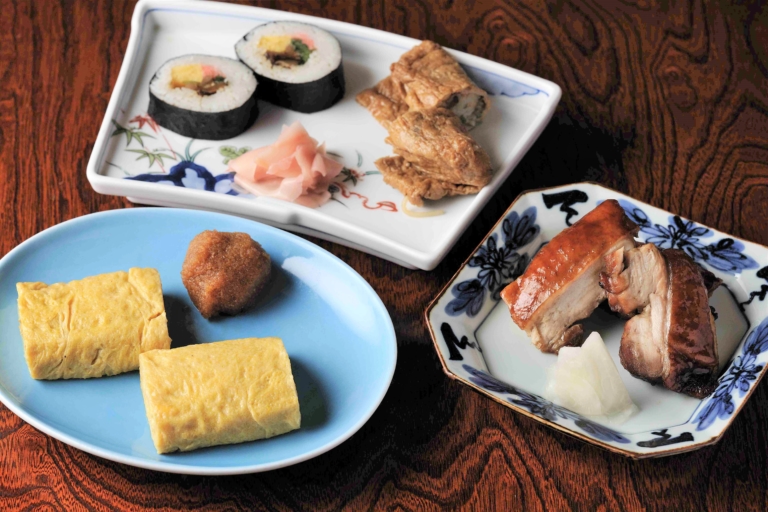
Things that never change,
and things that evolve with the times.
Yanagihara:Grilled chicken and fried eggs are standard sobamae* side dishes. Do you know what they share in common?
*sobamae: food to be eaten before soba
Ichiya: What is it? They use soy sauce, mirin, and sugar. Is it that they use soba soup?
Yanagihara: Exactly. Soy sauce, mirin, sake, vinegar, and miso, all unique Japanese condiments, started seeing use in the homes of the average family beginning in the latter half of the Edo Period. As seen in the “kaeshi” made in soba shops, which is made from soy sauce, mirin, and sugar, Japanese cuisine developed to be something that can be applied easily.
Ichiya: The flavor of the kaeshi decides the flavor for the entire shop.
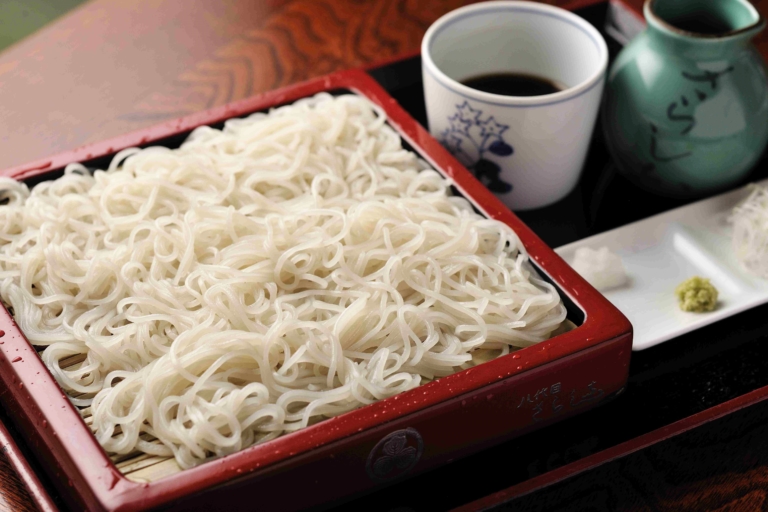
Yanagihara: A lot of the time as you passed down kaeshi you would be loyal to traditional formulas, but that doesn’t necessarily mean it’s important that the same recipe is always used. With Kinsa-ryu, we brought back the old recipe, and we found that it was too salty or too sweet for the modern palate.
Ichiya: It’s the same in rakugo. Even if you wanted to accurately portray the classic pieces made by the great masters, some of the words aren’t familiar to modern listeners, which may leave younger ones behind. The most important thing is the primary “roots” rather than accuracy, and if you can capture that, it won’t matter what kind of “leaves” grow from it, it will be a consistent, good piece of work.
Yanagihara: Right. I think the “roots” in Japanese cuisine is the broth. If you have good broth, the flavor overall won’t go wrong, even if you have a little too much or too little salt.
Ichiya: The tastes of the consumers change with time, in both rakugo and cuisine. That’s why I’d like to make a good broth, find my own kaeshi, and become a rakugo artist who can make all of his viewers enjoy their experience.
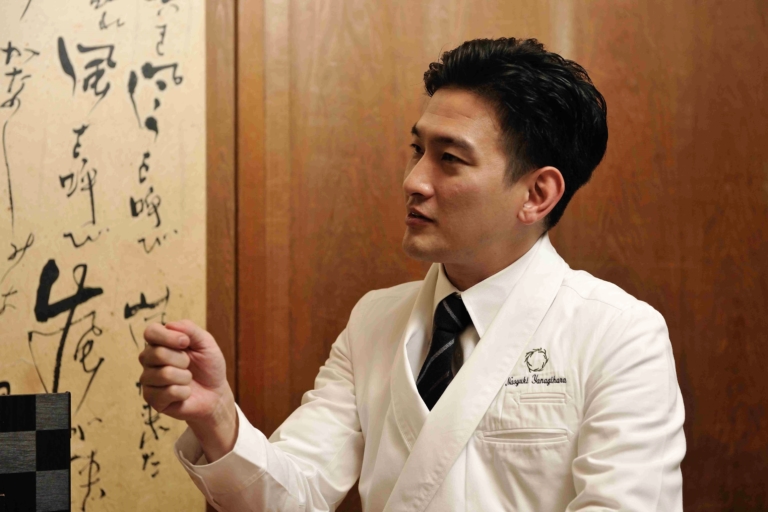
Kinsa-ryu Hier・ Naoyuki Yanagihara
Born in Mitano Ward, Tokyo, in 1979. Edo Cuisine Kinsa-ryu hier, and the vice president of the Yanagihara School of Traditional Japanese Cuisine. He teaches and researches Japanese and tea ceremony cuisine, and is involved in activism for the education of children in Japanese cuisine and spreading Japanese cuisine abroad.
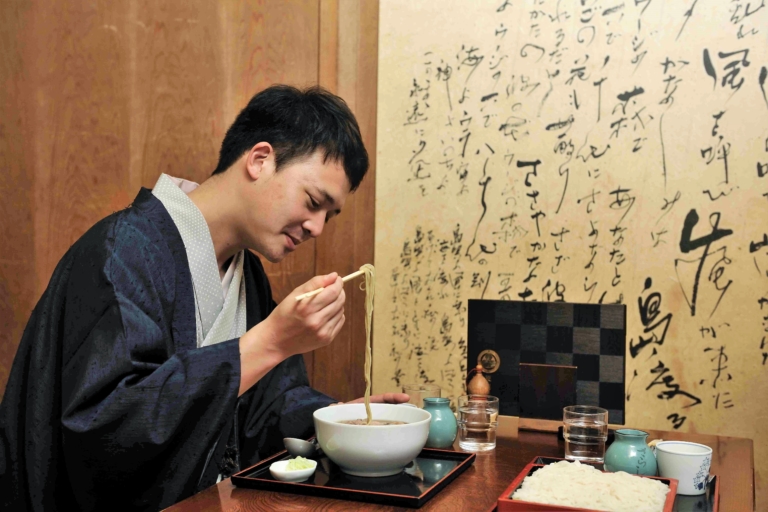
Rakugo Artist・Ichiya Ryotei
Born in Setagaya Ward, Tokyo in 1984. After graduating from university, he began working at an advertising agency, but met his current master, Ichiba Ryotei, during his trips to watch rakugo, and joined in 2007. He was promoted to the second stage in 2012. A young hopeful who often appears on TV and in magazines.



